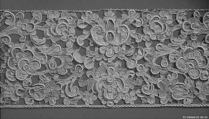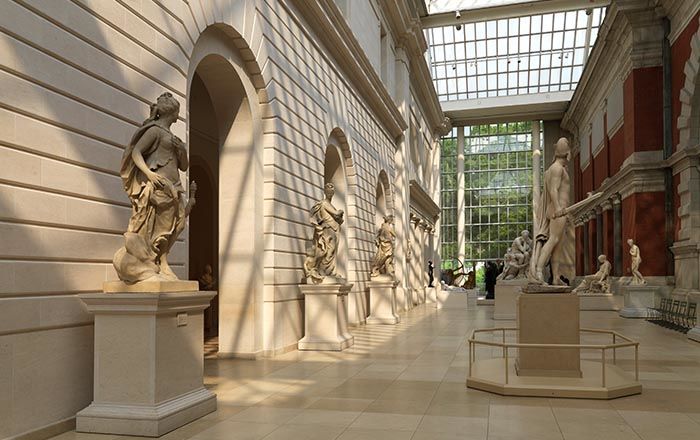Gros point needle lace border
Not on view
Seventeenth-century lace has a voluminous character—rather than the light and airy form of later periods—reflecting an era when luxury was equated with grandeur. Here, a careful balance is achieved between the solid forms of the formalized leaves and flowers and the voids in between. The sculptural relief of this type of lace appealed to artists working in other media: Baroque lace appears in the work of the English sculptor of wood, Grinling Gibbons, as well as in the marble sculpture of Bernini. Lace of this type was made in several sizes—the boldest designs on the largest scale being known as gros point. Smaller-scale designs were called rose point and point de neige.
This image cannot be enlarged, viewed at full screen, or downloaded.
This artwork is meant to be viewed from right to left. Scroll left to view more.



